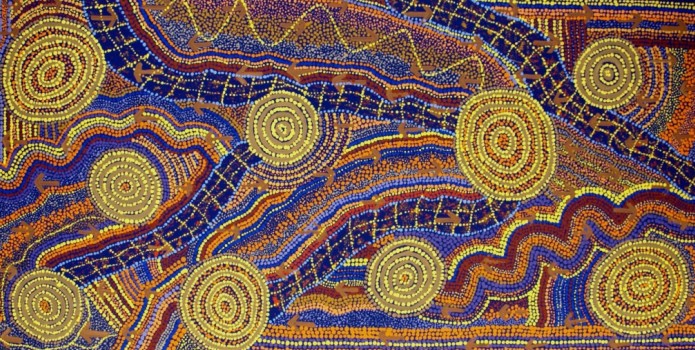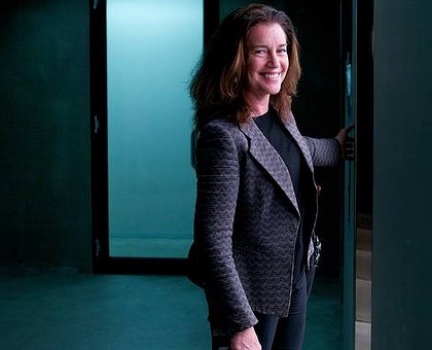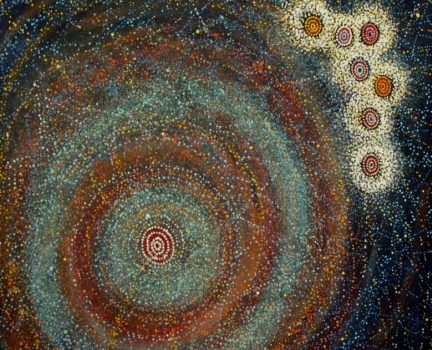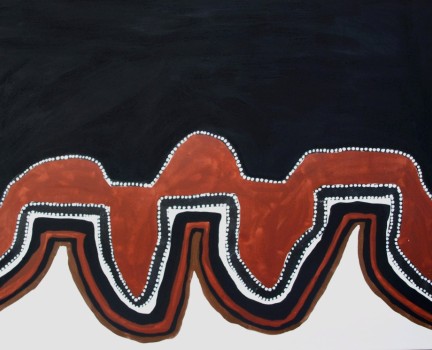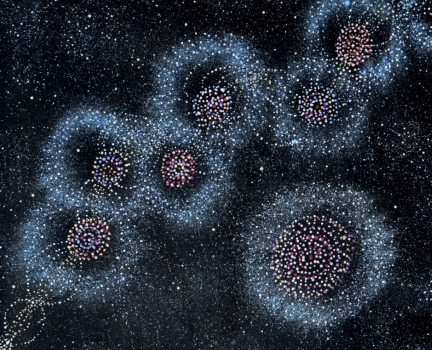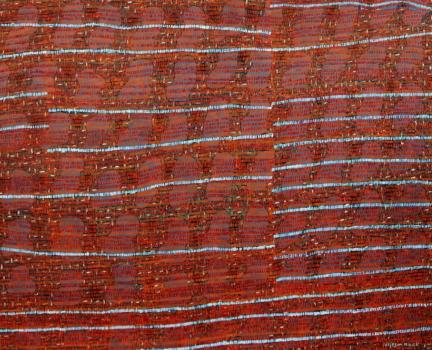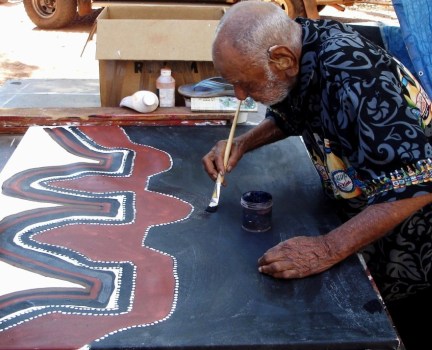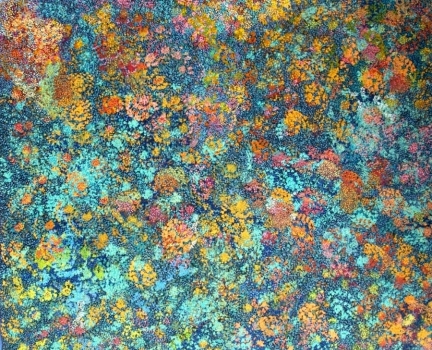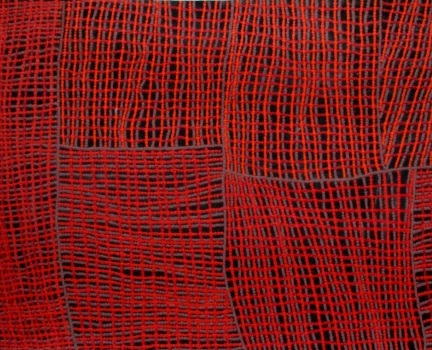Aboriginal Art and a Workplace Culture of Creativity
How does art transform a workplace? Professor Nadia Rosenthal was awarded a PhD in 1981 from Harvard Medical School and after a postdoctoral fellowship went on to direct a biomedical research laboratory at the Cardiovascular Research Center at Harvard Medical School. She is a Cell Biologist, and Founding Director of the Australian Regenerative Medicine Institute at Monash University. She talks here about how she started collecting Aboriginal art, and the impact of Aboriginal art on her workplace culture.
Q: You’ve bought Aboriginal art and displayed it in your workplace. How did that come about?
I hang a lot of my own Aboriginal art at the Institute at Monash University in Melbourne. The institute was the brainchild of me and some of my colleagues. Monash had the broadest and most open-minded response to my ideas. They gave me one floor of a large building that had previously been an office, but was very poorly designed. It was a very deep building with a lot of windows, but corridors that cut off most natural light on the inside.
I put glass everywhere so that you can see the trees on one side of the building, and right through to the other side. I painted a lot of the wall space a very beautiful sort of desert red colour. I started taking some of my own paintings in and hanging them on the black, white or the red walls. Everybody’s response was overwhelmingly positive. They really enjoyed having those paintings there.
We’re running out of wall space at the Institute, but I’m finding places to stick the paintings above, beyond, and below the normal places in order to just have people surrounded by this incredible art. I love Aboriginal art and I want other people to start living with it.
We move it around a lot. Every six months or so we go around and say, “Let’s move that one over there and that one over there so that people don’t get used to them and that they can continue to look at them in different lights and against different backgrounds.” It’s a very lively place.
Art Promotes Communication
We now have 250 scientists and staff working here. And a lot of people come through an air bridge from another building on their way to the cafe. They look through and see all of these art works which drag them in. That also helps with communication, it keeps people talking to each other. It’s mostly people who are under 40 years old. It’s a very young group, and they’re from all over the world. We have over 20 different countries represented, and you hear every language you can imagine. They’re all scientists.
We do bio medical research and we get politicians, government officials and other visitors coming through, They notice that this is an Australian environment. That’s very important, it’s one of the real joys about coming to this country - how rich the art really is and how important it is to everybody.
Change In Thinking About Workplace Culture and Environments
It’s only in the last two decades that there has been an appreciation of the environment in which scientists work and the importance of that environment. Up until then, we were stuffed into any old corner. I did my post-doctoral fellowship in a windowless virus isolation facility in the National Institutes of Health. You went through a number of airlocks because it was the period when people thought cancer was caused by viruses (it isn’t). All the airlocks were decommissioned. It was still painted a hideous green, there were overhead lights and we’d work in this absolutely ghastly fluorescent environment.
But we had all of our work in our heads, and there was a bunch of us and we were excited about it and so we managed. These days, we're much more sensitive to the fact that people are likely to come to work and stay at work if it’s actually a nice place to spend some time. It’s almost gone too far in the other direction, where these new institutes are so fancy that they look like sort of industrial or corporate. Now we're seeing good art go into institutes, not just in offices but in the actual quarters where you’re heading from one lab to another. It is an important way to keep people aware of the fact that they’re culturally advanced too. Just because they’re scientists, it doesn’t mean that they shouldn’t have beautiful things to look at beyond what they see in the microscope. Maybe a lot of scientists don’t think about what they see in the microscope as beautiful. That’s what putting art on the walls does, it shakes them a little bit out of their intellectual mind set and makes them think about a purely aesthetic vision.
The fact that the director buys all this art and puts it all over the walls for them to look at matters. I’ve had the paintings up there for over five years. They haven’t been damaged, they haven’t been moved, they haven’t been disturbed. People see them as part of the fabric of the Institute. Everybody really appreciates it because they see that somebody is making their environment beautiful for no other reason than to please their eye. I’m not thinking about what's going to make people work harder or better or anything like that. I’m just giving them something beautiful to look at.
I also want to influence people who come to this country and don’t know anything about Aboriginal art. I want them to get a different impression. There’s nothing like having a piece of art in your face every day to make you stop and look at it again and again and again and that’s how things grow. It's just like music if you listen to it more than once, it's a much better piece.
Q: What perspectives can you offer to people considering starting an Aboriginal art collection for their workplace?
I don’t think there’s really any better advice than buy what you love. Don’t worry about whether anyone else is going to love it. Because if it’s in your workplace, you’re going to have to look at it just as often as everybody else is. The other thing about the workplace is often you can get larger paintings. That means that a lot of these beautiful, very large paintings are often sequestered off in company lobbies. I feel I'm liberating these paintings and putting them some place where lots and lots of people are going to see them. That’s what a workplace gives you. It’s a chance to let those paintings be shared by many many eyes every day.
Read more:
- Read Indigenous and Endogenous – Cell Biologists and Aboriginal Art?
- View paintings by Sarrita King
- View paintings by Jack Dale Mengenen
- Read Layers of Meaning in Aboriginal Art?

